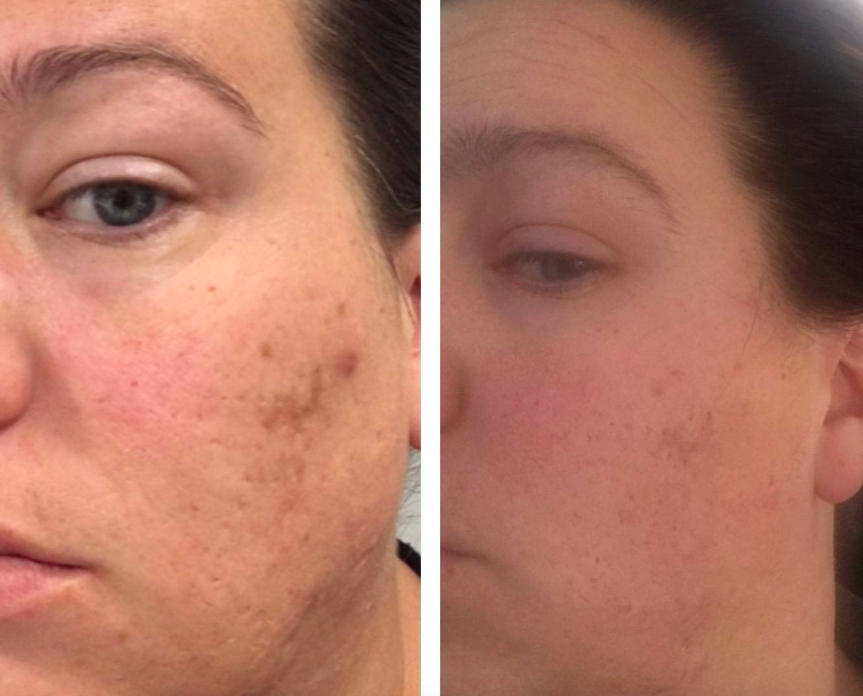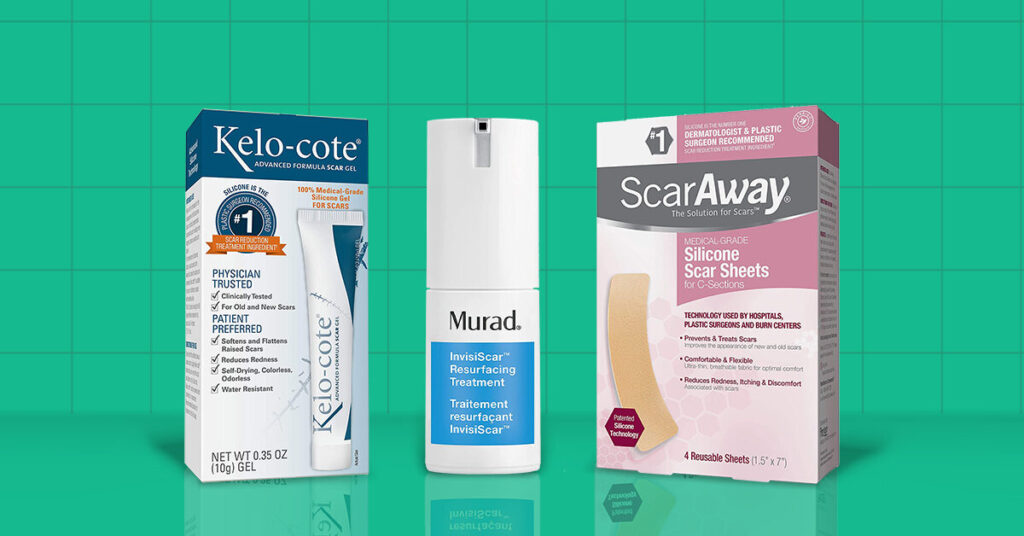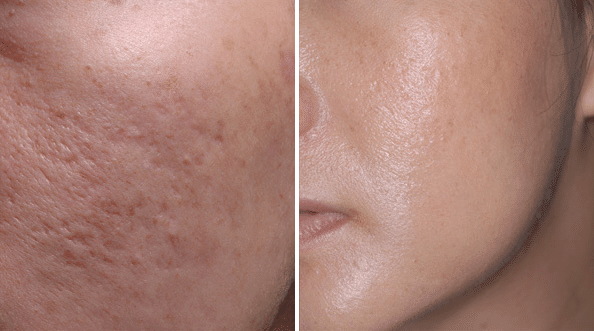Before and After Acne Scars Pictures Acne scars are a common skin condition that most people will experience at some point in their lives. It can be caused by anything from genetics, to hormones, to stress — but whatever the cause, it’s important to know that you don’t have to live with these unsightly blemishes forever. There are several treatments available today that can help reduce the appearance of acne scars, including laser resurfacing and chemical peels.
If you want to learn more about how these treatments work and what they can do for you, read on:
How Acne Scars Form
Although acne is usually thought of as a problem that affects teenagers, it can affect people of all ages, including adults. Acne occurs when sebaceous glands in your skin enlarge or become clogged with dead skin cells and bacteria. When this happens, the pores get inflamed, which causes them to fill up with pus-like substances. This creates small bumps on your skin that may look like pimples or large whiteheads (really inflamed pores).
In addition to making your face break out in red bumps or pimples, acne can also lead to scarring—especially if you pick at the blemishes
Can acne scars ever be removed?
Acne scars are a common problem that affect almost everyone at some point in their lives. Even when the acne itself is gone, acne scars remain behind. If you’re left with acne scars, you may want to consider treatment options for removing them. There are many options for treating acne scars, including chemical peels, dermabrasion and laser resurfacing.
The good news is that these treatments can help reduce or eliminate the appearance of acne scars. The bad news is that these treatments can be expensive and take time to complete.
Chemical peels: Chemical peels are one way to treat post-acne scarring. A chemical peel uses the action of a chemical solution that affects the epidermis (upper layer) of your skin to improve its tone and texture by removing damaged layers of skin and promoting new growth. Chemical peels may be performed by your dermatologist or cosmetologist as part of a series of treatments over several months or years.
Dermabrasion: Dermabrasion removes superficial layers of damaged skin using a hand-held instrument called an abrasive wheel or brush that spins at high speed while being guided across your face by hand pressure applied by yourself or your dermatologist or cosmetologist during this procedure
How can I permanently get rid of acne scars?
The first thing you should do is to find out what type of scar you have. The most common types are ice pick scars and boxcar scars. Ice pick scars are small, deep holes in the skin, while boxcar scars are wider, flatter and more rounded.
Acne scar treatment options include:
Topical retinoids – These can be effective at reducing the appearance of acne scars. They work by unblocking follicles, regenerating collagen and improving skin’s texture and tone. However, they may cause irritation and redness of the skin.
Chemical peels – A chemical peel can improve the appearance of acne scars by removing excess skin that builds up around them after healing from an injury. A chemical peel is also effective in treating fine wrinkles caused by sun exposure or ageing. It involves applying a chemical solution to your face which creates a controlled burn on the surface layer of your skin (epidermis). As this layer is shed off, new healthy skin grows from below (dermis). This process results in improved texture and colouration of the affected area as well as reducing fine lines and wrinkles around it.
The only way to get rid of acne scars is through surgery. Fillers can help, but they’re temporary and may need to be repeated.
The best way to treat acne scars is with a combination of treatments that address the different types of scars. The most common treatments include:
How long do scars from acne last?

Most people get acne at some point in their life. Acne is caused when oil and dead skin cells clog the hair follicles on your face, chest and back. These blockages can cause blackheads and whiteheads to form. If bacteria gets into the follicle and an infection develops, you may get redness, swelling and pus-filled lesions (pimples).
When acne clears up, it leaves behind flat marks on the skin’s surface called post-inflammatory hyperpigmentation (PIH). PIH looks darker than your normal skin tone and lasts longer than the original pimple because it takes time for the blood vessels to return to normal after they’ve been damaged by acne. This is why some people may have dark spots after their acne clears up.
Dark spots are caused by excess melanin — a pigment that gives skin its color — which builds up in response to inflammation or injury in the skin’s dermis layer. They appear as brown or black spots on your face, arms or chest. You might also see these dark patches on your back if you sleep on your stomach or if you have a mole that bleeds easily.
How long do scars last?
The time it takes for old scars
Why are my acne scars not going away?
Why are my acne scars not going away?
Acne scarring is a common outcome of acne. It occurs when the skin becomes damaged during an acne outbreak. This can cause the skin to become pitted, wrinkled or discolored.
You may have heard that there are different types of acne scars — ice pick scars and boxcar scars, for example. Ice pick scars are deep holes in the skin, while boxcar scars are raised above the surface of your skin. However, these terms don’t tell you much about what causes them or how to treat them.
Causes of Acne Scars
Acne usually starts with blackheads and whiteheads around hair follicles on your face (or wherever else you sweat). The first sign of an impending breakout may be small red bumps on your skin or tiny whiteheads that resemble a piece of grated cheese from afar. These small pimples will rupture easily into larger ones if you pick at them with your fingernails or other objects that can introduce bacteria into your pores.
As soon as one pimple has burst open, other surrounding pores can become clogged up with dead skin cells and sebum (an oily substance secreted by sebaceous glands), causing further inflammation and leading to more break
How do you fade acne scars naturally?
Acne scars are the result of inflammation, and the healing process can leave an indented scar where the pimple once was. If you have active acne, there are several things you can do to prevent breakouts and reduce the appearance of acne scars.
Acne: How to Treat It and Prevent Future Breakouts
How Do You Fade Acne Scars Naturally?
While there are no products that can actually remove acne scars, there are several options that will help reduce their appearance. The key is to use a product that contains ingredients that encourage cell turnover to replace old skin cells with new ones. This will help reduce the appearance of acne scars by removing dead skin cells from the surface of your skin while also helping fade any discoloration left behind by old blemishes.
The best way to fade acne scars naturally is to take care of your skin from the inside out. That means eating well-balanced meals, avoiding junk food and soda drinks, drinking plenty of water each day and getting enough sleep every night (7-8 hours). By taking good care of your body, it’s going to be easier for your skin to repair itself after breakouts or other injuries occur.
Do acne scars get darker before they fade?
The answer is yes.
Acne scars are caused by inflammation and injury to the skin. The body responds to this injury by producing a small amount of pigment (melanin) in an attempt to help heal the damaged tissue. This results in the formation of dark spots on your skin, which appear as scars.
The color of these scars will depend on how much melanin was produced by the body. If there is not much melanin present, then the scar will be lighter in color than normal skin and may even be invisible. However, if there is a lot of melanin present, then the scar will look darker than normal skin and may appear more noticeable or prominent.
Yes, acne scars can darken. The skin that has been damaged by acne can take months to heal, and during this time it is possible for the scar to darken. This may be due to the fact that the skin is trying to heal itself, and if it is not successful in doing so then it will end up darker.
The best way to prevent this from happening is by using a topical cream or gel that contains an antibiotic or retinoid. These are very effective at clearing up acne and also help to reduce the appearance of acne scars.
If you have found your scars have darkened it is important that you don’t worry as they should eventually fade away again once they have healed completely
How long do scars take to fade?

The time it takes for your scar to fade is different for each person. It can take months or years, depending on the location of the scar and how well you care for it.
You can start seeing some improvement in your scar after just one month. But it will take more time for the scar to fully fade — especially if it’s a large one or located on an area that gets a lot of sun exposure (like your face). In fact, some scars never completely disappear.
Here’s what you can do to speed up the fading process:
Keep your wound covered with a bandage or dressing until healed. This will protect it from dirt and germs as well as help keep out sunlight that could affect its appearance over time.
Apply petroleum jelly or other moisturizers daily to reduce dryness around the wound and prevent itching, which can cause irritation and redness along with your scar.
Don’t pick at or rub at your new wound — this could cause damage and slow down healing time.
The scar will fade over time. The rate of fading will depend on your skin type and the type of scar.
The best way to make a scar less noticeable is by using silicone gel sheets. These can be bought from most chemists or supermarkets. They can also be ordered online from websites like Amazon and eBay.
If you have a very thick, raised scar, it may take longer for it to fade. If the wound was deep and involved muscle or tendons, it will also take longer to heal and fade.
When Will scars turn white?
Scars are usually red and raised. They’re also often itchy. As your body heals from surgery, a cut or wound, it replaces damaged tissue with new collagen, which is laid down in the same way as natural skin.
There are several stages of healing for a scar:
Red: When you have a new scar, it’s usually red and raised because of inflammation and swelling. Your immune system produces cytokines (chemicals) that cause blood vessels to leak fluid into the area around your wound. This causes it to swell up and become red.
Itchy: At this stage, your scar may be itchy because of all this extra fluid in the area around it. It can also be very sensitive because nerve endings have been damaged during surgery or injury.
Dry: After some time has passed — anywhere from six weeks to three months — the scar should start to look dry and pale compared with other skin on your body. Your body will continue making new collagen but at a slower rate than when you first got injured or had surgery.
White: Over time, your scar will slowly fade away until it becomes white like natural skin. This can take several years if you have an old scar that hasnIt’s important to keep in mind that the color of your scar won’t change just because you want it to. Scar tissue is made up of collagen, which helps the wound heal. The new tissue doesn’t look like normal skin and can sometimes be different shades of pink, brown or yellow.
Do all scars turn white?
Scars are the result of skin injury, and they may be caused by a variety of factors. Scars can be raised or flat, red or white, and they can affect one or many areas of the body.
Scars are composed of fibrous tissue that replaces normal skin tissue damaged due to injury or surgery. The amount of scarring depends on the extent of the damage and may vary greatly among individuals. Scars usually fade with time, but there are some things you can do to help them heal faster.
Some scars never lose their color while others become white over time. There are many factors that determine how your scar will look like when it heals:
Age – New scars tend to be pinkish-red in color but will slowly fade over time as more collagen forms around it. Scars that are several years old often fade to a lighter shade but may still have color variations depending on how deep they are located in your skin and other factors such as sunlight exposure and ethnic background.The most common type of scar is the hypertrophic scar, which is red and raised. The second type is known as a keloid, which is also raised but has a tendency to grow beyond the boundaries of the original wound.
What is best scar treatment?

There are many different types of scars, each with their own characteristics and treatment options. The best scar treatment depends on the type of scar you have.
What is a scar?
A scar is the body’s natural response to injury or surgery. It is a protein-based structure made up of collagen and elastin fibres, which helps repair damaged tissue in the skin. When you cut yourself, your body produces new skin cells to heal the wound. These new cells grow together, forming a scar. Scars form when your body heals from an injury or surgery; they do not always appear where the actual wound was located. Scars can be raised or flat, red or purple, white or yellow and may feel tight or itchy.
The main reason that some people are more likely to develop scars after surgery than others is because of differences in their skin type and colouring. People who have darker skin tones often produce greater amounts of pigment (melanin) after an injury than those with lighter skin tones – this can make healing take longer and may result in a more pronounced scar.
Best Scar Treatment
Scar removal methods vary in their effectiveness and safety. These include the following:
Surgical excision or cutting out of the scar tissue
Laser therapy to improve color, texture, and appearance of scars
Dermabrasion, which removes damaged skin by sanding it away with a rotating brush
Fractional laser resurfacing to smooth out deep wrinkles and scars caused by acne or other skin issues
